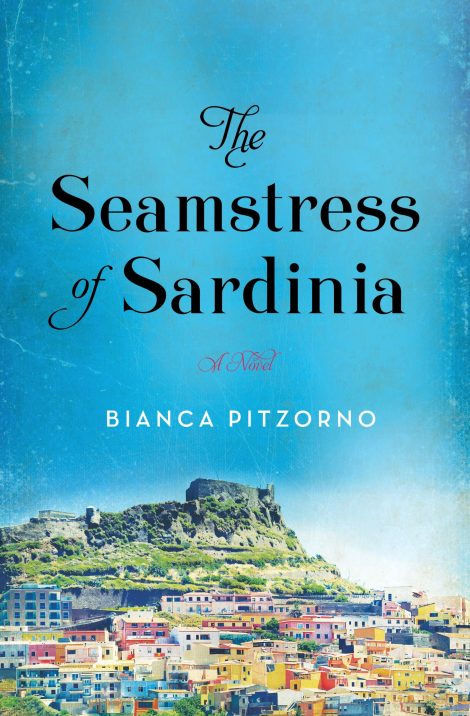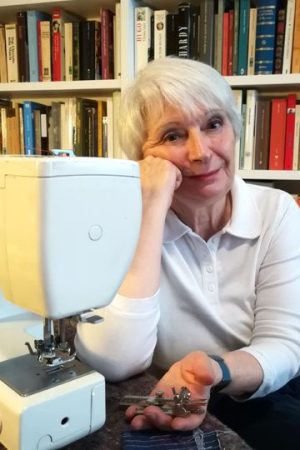
THE SEAMSTRESS OF SARDINIA
A bestselling Italian writer makes her American debut with this delightful dramedy of manners, family, romance, and fashion that is set on the island of Sardinia at the end of the nineteenth century—a dazzling and original literary blend of Jane Austen and Adriana Trigiani.
In 1900 Sardinia, a young woman’s remarkable talent with a needle earns her a position as a seamstress with a wealthy family. Inside this privileged world far different from her own humble beginnings, the skilled sewer quietly takes measurements, sketches designs, mends hems—and in the silence, hears whispered secrets and stories of all those around her.
A bestselling Italian writer makes her American debut with this delightful dramedy of manners, family, romance, and fashion that is set on the island of Sardinia at the end of the nineteenth century—a dazzling and original literary blend of Jane Austen and Adriana Trigiani.
In 1900 Sardinia, a young woman’s remarkable talent with a needle earns her a position as a seamstress with a wealthy family. Inside this privileged world far different from her own humble beginnings, the skilled sewer quietly takes measurements, sketches designs, mends hems—and in the silence, hears whispered secrets and stories of all those around her.
Through the watchful young seamstress’s eyes, this small Italian city and its residents emerge in all their vitality, vanity, and fragility—flawed yet congenial people who are not quite what they pretend to be. There is the Marchesa Esther, who rides horses and studies mechanics and ancient Greek; Miss Lily Rose, a spirited American journalist who commissions a special corset—with pockets to hide more than just her flaws; the Provera sisters with their expensive Parisian fashions that belie their financial hardships; and Assuntina, the wild child. There are men, young, old, and in between; love affairs and broken hearts; and even a murder (or was it suicide?). And at the center, watching and waiting is the seamstress herself, an intelligent, ambitious girl with a tender heart and her own impossible dream.
An irresistible literary confection rich in atmosphere and period detail and packed with compelling characters. The Seamstress of Sardinia transports us to a long-ago world not so removed from our own—to a society rigidly divided by wealth and shaped by passion, hope, ambition, and love—the elemental forces that drive human lives.
- Harper Perennial
- Paperback
- December 2022
- 304 Pages
- 9780063271692
About Bianca Pitzorno
 Bianca Pitzorno is well-known in Italy as a writer who usually focuses on female characters with complex personalities. While her books often have comic elements they are also often focused on issues of politics and social class.
Bianca Pitzorno is well-known in Italy as a writer who usually focuses on female characters with complex personalities. While her books often have comic elements they are also often focused on issues of politics and social class.
Praise
“The Seamstress of Sardinia will sweep readers away to post-unification Italy with the twists and intrigue of Italian nobility.” — Diana Giovinazzo, author of Antoinette’s Sister
“Will be a hit with readers seeking a historical novel with a protagonist to root for: a strong young woman who hopes to succeed despite having few advantages.” — Library Journal
“This sumptuous costume drama has a great deal of heart.” — Publishers Weekly (starred review)
“This feminist fairy tale is sure to be a book-club favorite and will appeal to fans of Laura Esquivel, Adriana Trigiani, and Elena Ferrante.” — Booklist
Discussion Questions
1. In The Seamstress of Sardinia, the wealthy men have power over women. Or do they? In what way does our heroine turn that truism on its head?
2. Discuss the ways in which our heroine uses her “lesser” class to infiltrate the lives of other residents more seemingly fortunate than she?
3. Which of the characters “serviced” by the seamstress is your favorite? Why?
4. Would you describe the heroine as naïve? Savvy? Frightened? Or something else? Discuss.
5. While there is a bit of frothiness in this book—the discussions of clothes are delicious!—there are also more serious themes. What are those themes and how do you relate to them?
Essay
A Note from the Author
The stories and characters in this book are the fruit of my imagination.
However, every episode has its origin in a real-life event that I learnt about from stories told by my grandmother, who was of the same generation as the protagonist, from letters and postcards she kept in a suitcase, from newspapers of the time, and from the recollections and anecdotes that make up our family vocabulary. I reordered events, filled in the gaps, invented details, added in surrounding characters, sometimes changed the stories’ endings. But occurrences of the kind described here did take place once upon a time—even in the best of families, as the old adage goes.
The seamstress paid by the day, the sartina, was a frequent presence in bourgeois houses up to the time of my early adolescence. All the more so in the post-war years, when everybody was forced to ‘recycle’ and reuse clothing and fabrics in new forms. It was not until later that industrially produced linen and clothing came along, as well as ready-to-wear fashion, and then the big designer brands. When low-cost clothing started appearing in department stores, rich people who cared greatly about elegance, or who wanted to stand out, continued to get their clothes made to measure, but by renowned dressmakers at true couture houses.
The era of the sartina was over.
The aim of this book is to ensure that they are not forgotten.
